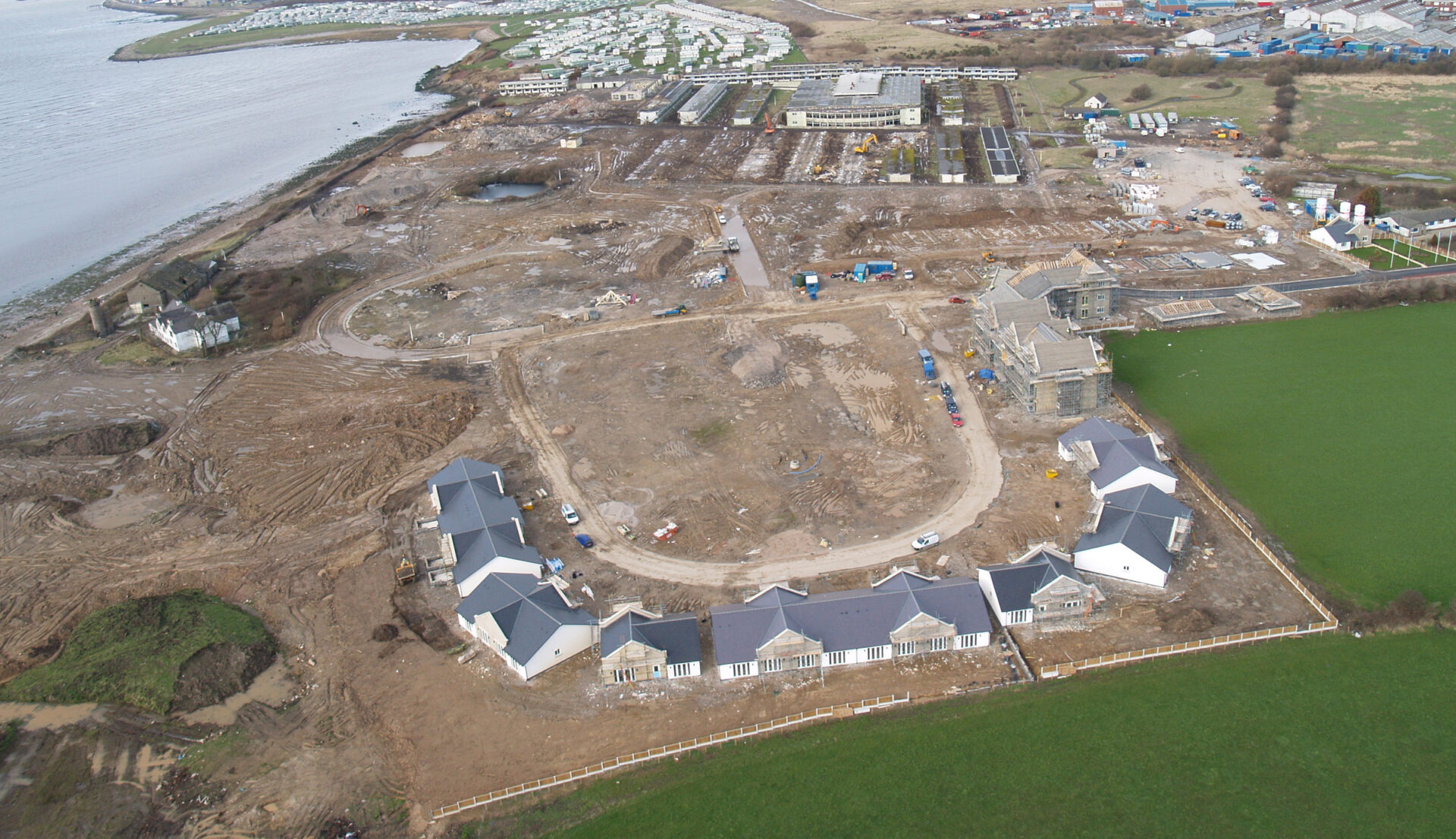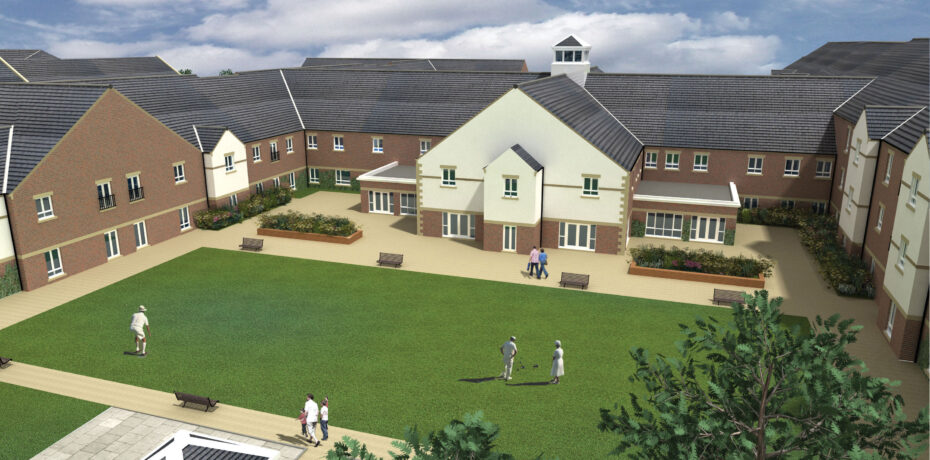New homes for old money
More developers than ever are seeking profits in the North West's ageing and affluent population through upmarket retirement villages. Jayne Dowle went looking for the wrinkly pound
What would you say to a luxury £250,000 home on the Lancashire coast? You'll have a tennis court, bowling green, croquet, gymnasium, swimming pool and spa. There will be restaurants, snack bars, a library. It's safe. There are burglar alarms and CCTV cameras everywhere. The snag? You have to be over 55.
Middleton Village (pictured inset) near Morecambe, with its 570 bungalows, cottages and houses, is amongst the latest and largest "continuing care retirement community" (CCRC) to launch in the UK. It is being built on the site of the former Pontins' holiday camp by Prestigious Retirement Villages, and is based on upmarket retirement communities in Canada and America.
 "Many of today's and certainly tomorrow's older people aspire to the kind of retirement environment they have experienced on holiday," says John Galvin, chief executive of the Elderly Accommodation Counsel.
"Many of today's and certainly tomorrow's older people aspire to the kind of retirement environment they have experienced on holiday," says John Galvin, chief executive of the Elderly Accommodation Counsel.
The Department of Health describes a CCRC as "an all-embracing, comprehensive alternative to both sheltered housing and residential care providing for a whole range of needs and individual circumstances".
CCRCs usually have over 100 units and are built either around a core building which houses communal facilities, or with facilities spread around.
The flashiest retirement communities are criticised for being targeted only at wealthy pensioners. Providers are responding by offering mixed tenure developments, with a choice of purchase, rent or shared-ownership. Some attract subsidy from the local council, housing associations or charities. Most owner-occupied units in England and Wales are on long leases. In Scotland they are freehold.
Residents commonly pay a service charge for facilities and the duties of a manager/warden. The EAC says that the charge varies, but tends to be between £30 and £50 a week. Residents pay ground rent, council tax, water charges, contents insurance, telephone and fuel bills. Optional home care and meal services are charged separately.
The market is growing fast. Five years ago there were just a handful of "villages". Ryfields in Warrington was one of the first to open, in 2002. Today, the EAC estimates that there are more than 1,000 developments offering some degree of "extra care".
The market is also diversifying to attract residents and literally, lock them in. Long-term makes commercial sense. If a resident moves in at 55, they could live for another 30 or 40 years and will be ripe to buy into an evolving "product".
Oakbridge Retirement Villages LLP, a joint venture between the HICA Group and the Caddick Group, recently announced it is building Oakbridge, a £30m retirement village within Buckshaw Village, the huge housing development between Chorley and Leyland.
Oakbridge will comprise three "living concepts": The Court has independent living with access to facilities, The Grange, assisted living for those requiring day-to-day support, and The Lodge, supported living for Alzheimer's sufferers and those with related illnesses.
"The wide range of facilities and the three distinct communities means residents can be as active or as relaxed as they choose," says Oakbridge sales director Irene Hefferman.
Enticing facilities aside, there is clearly a need for accommodation for older people who want to move into a more supported setting. Tighter regulations and rising labour costs have led to the widespread closure of traditional care homes, yet the demand for care places for elderly and disabled people is projected to soar from 420,600 in 2006 to 445,300 by 2016 (source: Laing & Buisson).
You can see why there is money to be made on selling a retirement dream. This summer Congleton-based commercial developer Gladman Group branched out to launch the Adlington Estates brand, and has already secured more than 20 sites across the North West.
But there is a big question. Are CCRCs proliferating because they are easier for developers to get through the planning process than straightforward housing schemes?
Like nursing homes and other residential institutions, CCRCs usually fall under the Use Class C2 of the Use Classes Order, on account of the inherent element of "care". Straightforward residential development comes under Use Class 3 (dwelling houses) and must fit into any local housing plan.
Although this might appear to offer a "get rich quick card" to developers stymied by requirements for affordable housing and suchlike, Robin Tetlow, a planning expert who has produced a detailed study of the sector, disagrees.
He argues: "An analysis of successful CCRC schemes approved by local planning authorities and the Secretary of State reveals that the planning decisions have usually involved a sophisticated balancing of different material planning considerations."
Tetlow points out that the choice of sites for CCRCs is actually "extremely limited". Desirable indicators include: more than one in five people over retirement age living in the locality; level site, near public transport, with shops, church and other facilities; large area, typically between three and five hectares; not more than five miles from a major centre of population; for mixed tenure models, local house prices at no less than half the cost of providing an 'extra care' dwelling, depending on the availability of subsidy; and site-specific attractive features such as a pleasant outlook near a park (source: Planning for continuing care retirement communities: issues and good practice, Joseph Rowntree Foundation, April 2006).
However, the typical image of a retirement village as a sprawling gated community snaffling up the green-belt is already being challenged. Property developer the Metier group recently sold the site of a former nightclub on Union Street in central Chester to McCarthy & Stone, a leading player in the retirement market, for an undisclosed sum.
"The land on Union Street was acquired approximately five years ago and was considered for a variety of uses," says Andrew Hine, director of Metier Group. "We now feel that it's an appropriate time to dispose of the land to specialist retirement home operator McCarthy and Stone."
In April, planning consent was granted for the development of 74 units under Category II type accommodation, defined as "accommodation designed for the elderly".
As in many other cities across the North West, there is local concern about the number of apartments being built in Chester and left empty. Developers are facing scrutiny at every turn. The retirement revolution could be one way to fill town and city centres that the young urban warriors of regeneration had never anticipated.




